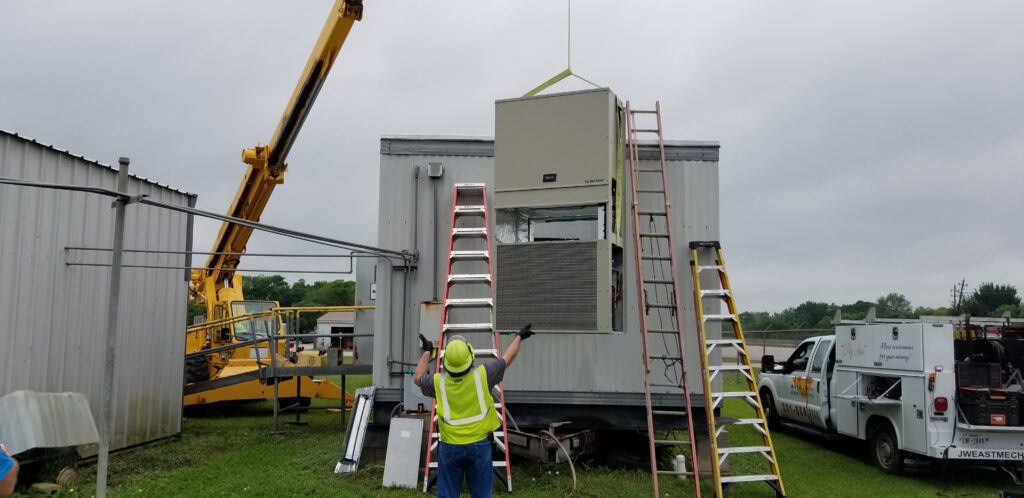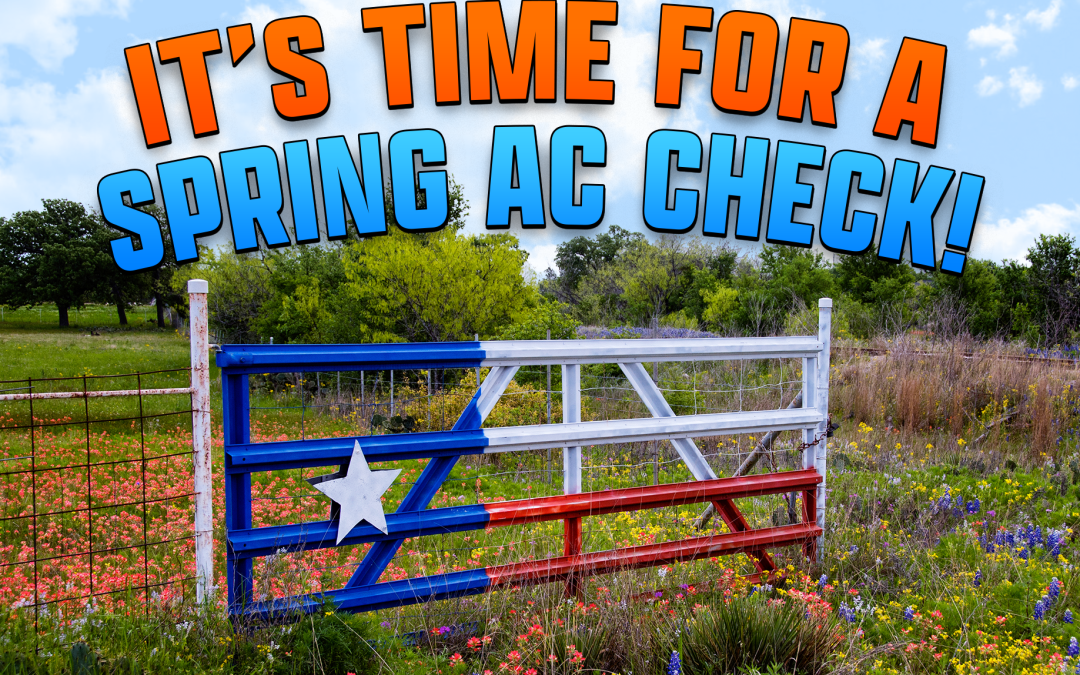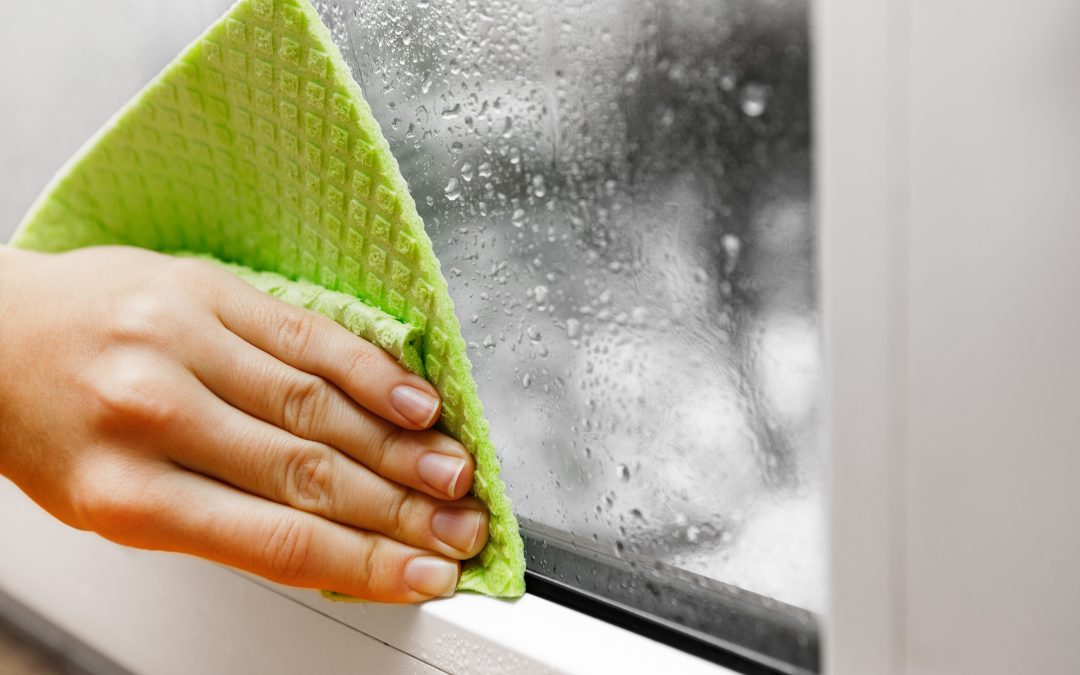
by Sabrina Cox | Jun 7, 2024 | Uncategorized
As the summer sun and humidity beat down on Houston, we brace ourselves for another season of battling high electric bills. With temperatures soaring and air conditioners running around the clock, it’s common for energy costs to skyrocket during the summer months. However, there are strategic ways to keep those bills in check without sacrificing comfort. By implementing simple yet effective energy-saving strategies, we Houstonians can stay cool while also saving money on electric bills.
Don’t set your thermostat too high or too low when leaving the house for the day. Many people think that setting their thermostat to a high temperature will help keep their energy usage and monthly bills down. But that is not true. If you set your thermostat to 80 degrees and turn it down to around 74 degrees when you get home, you are causing your unit to work really hard. It will run constantly until your whole house reaches 74 degrees, which could take hours in our Houston heat. By setting and keeping your thermostat set in the range of 76-78 degrees, it won’t have to work as hard to cool down, which will save you money and energy.
Keep the doors to rooms inside your house open. In many houses, certain rooms cool faster than other rooms. By keeping bedroom doors open you are helping the air inside your home circulate and recondition all air inside the home, and doing this will keep your home cooler.
Don’t forget to change your air filters. Changing your air filters is important, but it is especially important during the summer when the need for optimal airflow is so necessary. Dirty air filters restrict airflow and put stress on your whole HVAC system. When your HVAC system is stressed, it runs inefficiently and uses more energy than it should. During the summer it is a good idea to change your air filters once a month, and change your whole house filters that are attached to your AC unit twice a year.
Turn ceiling fans off when you leave a room. Ceiling fans are great because they help circulate airflow, but they actually do nothing when it comes to cooling down a room. According to experts, ceiling fans only give you the sensation of being cool, and because of this it is important to turn them off to save energy when you leave a room.
Have a professional inspect your ductwork. The number one cause of higher energy bills is related to leaky ductwork. In fact, you can lose up to 28% of your cool air because of small holes and leaks. If you have leaks and you don’t realize it, you are paying a lot of money to air condition your attic, and no one wants that! Having a professional come out to inspect your ductwork can end up saving you thousands of dollars.
Make sure your home has enough insulation. Attic insulation acts as a blanket for your house. It helps to keep your home warm during the winter and cool during the summer by not allowing air to escape through the roof. On average, insulation needs to be added every 10-12 years. So if your home is a certain age, this is something to consider doing.
Check your doors and windows for leaks. Just like leaks in your ductwork, leaks in doors and windows amount to a significant loss of cool air, which is why it is important to have them checked annually for leaks. Caulk, which is used to seal small holes around the perimeter of your doors and windows, has a shelf life and needs to be replaced at least once a year. Sealing up all leaks will ensure that air conditioned air stays inside your home.
Managing high electric bills during the summer doesn’t have to be a daunting task. By implementing the energy-saving strategies listed above, you can make a significant impact on reducing your electricity costs. And if you do run into an issue with your HVAC unit, remember to call the experts at JW East!

by Sabrina Cox | May 10, 2024 | Uncategorized
As Houstonians we are very familiar with hurricane season, starting June 1 and ending November 30. Experts are predicting this year to be bigger and more active than it has been in many years, with meteorologists from Colorado State University stating that our chances for tropical impact are more than doubling this season.
“Our normal chance of a tropical storm impacting Houston is 29% and for Galveston is 34%” says CSU. “We are predicting that this year we will have a 45% and 51% chance. For a hurricane impact in Houston, the chance goes from 16% to 25% and for Galveston from 19% to 30%. Finally, our odds in Houston of a major hurricane impact increase from 4% to 7% this year while Galveston goes up from 6% to 9%. The real takeaway is that our odds have jumped considerably to be hit by a storm. And that is really all that matters.”
Because hurricane season this year is predicted to be active, it’s important to do all you can to protect your home HVAC system. And to make it easier, we have created a list of what to do before, during, and after the storm to keep your HVAC system as safe as possible.
Before the storm:
- Schedule a professional inspection and maintenance: A qualified technician can inspect your system for any potential issues, clean the coils and filters, and ensure everything is operating efficiently.This will help prevent breakdowns during the storm and ensure your system is ready to handle the increased cooling demand after the storm.
- Clear debris from around the unit: Remove any leaves, branches, or other debris that could block airflow to the condenser unit.This will help prevent overheating and damage to the system.
- Turn off the power to the unit: If you expect the storm to cause power outages, turn off the power to your HVAC system at the breaker box.This will prevent damage to the compressor and other electrical components.
- Cover the unit: If possible, cover the outdoor unit with a tarp or plywood to protect it from wind and rain.Make sure the cover is securely fastened and won’t blow away in the wind.
- Secure loose objects: Secure any loose objects around the unit, such as patio furniture or grills, to prevent them from becoming projectiles in high winds.
During the storm:
- Leave the system off: Keep the power to the HVAC system turned off until the storm has passed and it is safe to turn it back on.
- Monitor the system: If you are able, monitor the system during the storm to check for any signs of damage, such as leaks or unusual noises.
After the storm:
- Inspect the system for damage: Once the storm has passed, carefully inspect your HVAC system for any damage. Look for leaks, loose wiring, or other problems.
- Do not turn on the system if it is damaged: If you find any damage, do not turn on the system.Call a qualified technician to repair the damage before restarting the system.
- Clean up debris: Remove any debris that may have accumulated around the unit, such as branches or leaves.
- Turn on the system: Once you are sure the system is undamaged, you can turn it back on.
By following these steps, you can help protect your HVAC system from damage during hurricane season. We have also put together a list of tips that will be helpful to follow:
- Use a surge protector: A surge protector can help protect your HVAC system from damage caused by power surges.
- Have a backup generator: If you have a backup generator, you can use it to power your HVAC system during a power outage.
- Keep important documents in a safe place: Keep copies of your insurance policy, HVAC maintenance records, and contact information for your HVAC technician in a safe place in case you need them after the storm.
Hurricanes are never easy to deal with, but being as prepared as possible will give you peace of mind. And following the advice listed above will put you on the right track to keep your home, family, and HVAC system as safe as possible. But if you do experience damage, call the experts at JW East Mechanical.

by Sabrina Cox | Apr 11, 2024 | Uncategorized
In Houston, modular buildings are used for a variety of purposes due to their versatility, cost-effectiveness, and quick construction timelines. They can be multi-storied and cover thousands of square feet, making them ideal for temporary education and institutional needs or even church space on Sunday.
Modular buildings have unique heating and cooling needs compared to traditional structures due to their design, construction, and characteristics. Because these buildings have different air conditioning systems, they require a technician who is licensed and trained in modular HVAC.
Some aspects that make the heating and cooling requirements of modular buildings distinctive include:
Limited Space: Modular buildings are often built with space-saving considerations in mind, leading to compact layouts that may present challenges for installing traditional HVAC systems. This limitation may require more innovative and flexible heating and cooling solutions to fit within the confined spaces.
Mobility and Flexibility: Modular buildings are designed for easy assembly, disassembly, and relocation. Heating and cooling systems in modular buildings need to be adaptable to frequent moves and reconfigurations, requiring systems that are portable or easy to uninstall and reinstall.
Insulation and Energy Efficiency: Due to the modular construction process, ensuring proper insulation and energy efficiency is crucial in modular buildings. Effective heating and cooling systems need to be able to maintain comfortable indoor temperatures while maximizing energy efficiency to minimize heating or cooling costs.
Multiple Modules: Large modular buildings often consist of multiple modules or sections that are interconnected. This setup can create thermal efficiency challenges, as each module may have different heating and cooling requirements. HVAC systems must be able to address these variations and provide consistent comfort throughout the building.
Ventilation and Air Quality: Proper ventilation and indoor air quality management are essential in modular buildings to ensure a healthy and comfortable indoor environment. Heating and cooling systems must be equipped with adequate ventilation solutions to maintain air circulation and quality, especially in enclosed modular spaces.
Regulatory Compliance: Modular buildings must adhere to building codes and regulations governing HVAC systems. Heating and cooling solutions in modular buildings need to meet specific standards to ensure compliance with local building regulations and ensure occupant safety and comfort.
Scalability and Customization: Modular buildings often serve diverse purposes, from temporary offices to permanent residential units. Heating and cooling systems in modular buildings must be scalable and customizable to accommodate varying usage requirements and occupant preferences.
Because of the differences listed above, servicing an HVAC system in a modular building requires a specialized technician. When you hire an expert as opposed to a residential HVAC technician you can expect the following:
Specialized Expertise: A modular HVAC expert is trained and experienced in working with these specialized systems, ensuring optimal performance and efficiency.
Custom Solutions: Modular HVAC experts can provide custom solutions tailored to the specific needs of modular buildings or spaces. They understand the intricacies of modular HVAC systems and can design solutions that maximize energy efficiency and comfort.
Efficient Installation: Modular HVAC systems often have different installation requirements compared to traditional systems. A modular HVAC expert knows how to efficiently install these systems in modular buildings, saving time and ensuring proper functioning from the start.
Up-to-Date Knowledge: HVAC technology is constantly evolving, and modular HVAC experts stay current with the latest advancements and best practices in the industry. They can recommend innovative solutions that improve performance and reduce operating costs.
Troubleshooting Skills: Modular HVAC experts have specialized troubleshooting skills to diagnose and resolve issues specific to modular HVAC systems. Their expertise can help prevent downtime and costly repairs in the long run.
Regulatory Compliance: Modular HVAC systems must meet regulatory requirements and standards. A modular HVAC expert is well-versed in these regulations and ensures that your system adheres to all relevant codes and guidelines.
At JW East Mechanical we have extensive air conditioning service, repair, and installation experience with modular buildings across all industries – industrial, commercial, and educational. We understand how these buildings work inside and out, and can quickly diagnose and fix any HVAC problem that might occur. If you are experiencing any HVAC issue in your modular building or have questions about installation, call the experts at JW East!

by Sabrina Cox | Mar 8, 2024 | Uncategorized
Your home is a system of systems, and we have stressed how important it is to check those systems and their equipment regularly and maintain them throughout the year. During the spring, it’s to ensure our air conditioning system is ready to handle the upcoming heat of summer. We recommend scheduling a spring HVAC check annually to keep your system running smoothly, efficiently, and safely throughout the year.
First, let’s start with why spring HVAC checks are important.
- Optimal Performance: Regular maintenance helps ensure that your heating and cooling system operates at peak performance levels. This can lead to better energy efficiency and lower utility bills.
- Preventive Maintenance: Identifying and addressing potential issues early can prevent costly repairs down the line. Regular maintenance helps catch small problems before they escalate into major breakdowns.
- Extended Lifespan: Proper maintenance can extend the lifespan of your HVAC system. By keeping the system clean and well-maintained, you can help it last longer and delay the need for replacements.
- Improved Air Quality: Regular maintenance includes tasks like changing air filters and cleaning components, which can lead to better indoor air quality. This is particularly important for individuals with allergies or respiratory issues.
- Safety: Ensuring that your heating system is functioning properly is crucial for the safety of your home. Regular maintenance checks can help identify and address any potential safety hazards.
- Warranty Requirements: Some HVAC manufacturers require regular maintenance as a condition of their warranty. Skipping annual checks could void your warranty, leaving you with potentially expensive repair costs.
What should a spring HVAC check include?
- Inspecting and Changing Air Filters: Ensure the air filters are clean and replace them if necessary. This helps maintain good air quality and efficient airflow.
- Inspecting Thermostat: Check the thermostat settings and make sure it’s functioning correctly to maintain comfort and energy efficiency.
- Checking Refrigerant Levels: Ensuring the refrigerant levels are correct can help your system operate efficiently and prevent larger issues down the line.
- Inspecting and Cleaning Condenser Coils: Clean condenser coils improve the system’s efficiency by aiding heat transfer.
- Inspecting Ductwork: Checking for leaks or blockages in the ductwork can help improve indoor air quality and system efficiency.
- Inspecting Electrical Connections: Tightening connections and checking for faulty wiring can prevent larger electrical issues in the future.
- Checking System Controls: Testing the starting cycle, operation, and shut-off sequence helps ensure the system is working properly.
- Inspecting and Cleaning Blower Components: Cleaning the blower components can improve airflow and efficiency.
- Checking for Any Unusual Noises or Odors: Identifying and addressing any unusual noises or odors can prevent potential breakdowns.
By ensuring that your HVAC system is running in optimal condition, you are not only prolonging the life of your system, but are also saving money. And who doesn’t want that? Be sure and schedule your spring HVAC check with the experts at JW East to make sure your home is summer ready!

by Sabrina Cox | Feb 9, 2024 | Uncategorized
It is hard to believe, but the first day of spring will be here in no time. And as we transition from winter to spring, we should start thinking about what that means for your HVAC system.
During the spring rain season in Houston, the combination of warm temperatures and increased moisture from the rain can lead to high humidity levels inside houses. When the air outside is humid, it can infiltrate homes, especially if there are any leaks or poor insulation. Additionally, activities such as cooking, showering, and doing laundry can also contribute to indoor humidity.
What can high humidity levels do to my home?
- Mold and mildew growth: High humidity can lead to the growth of mold and mildew, particularly in areas prone to moisture buildup such as bathrooms and kitchens. This can lead to health concerns and damage to the structure of the home.
- Condensation issues: Excessive indoor humidity can result in condensation on windows, walls, and other surfaces. Over time, this can lead to water damage, peeling paint, and even structural issues.
- Allergen and dust mite problems: Dust mites and other allergens thrive in humid environments. High indoor humidity can cause allergies and respiratory issues for everyone inside the home, especially older adults and children.
- Discomfort: High humidity levels can cause feelings of discomfort, stickiness, and a generally harsh indoor environment.
- Pest problems: Certain pests, such as cockroaches, thrive in humid conditions. Controlling indoor humidity can help deter these pests.
How do I control the humidity inside my home?
A home dehumidifier is a device designed to reduce and maintain the humidity levels in an indoor space. It works by drawing in moist air, removing the excess moisture, and then releasing the air back into the room at a lower humidity level.
There are two main types of home dehumidifiers:
- Refrigerative dehumidifiers: These dehumidifiers use refrigeration technology to condense moisture from the air. The moist air passes over cold coils, where the moisture condenses and drips into a collection tank. The drier air is then released back into the room.
- Desiccant dehumidifiers: Desiccant dehumidifiers use a drying agent, often silica gel, to absorb moisture from the air. These dehumidifiers are effective in colder temperatures and are generally quieter than refrigerative models.
Home dehumidifiers come in various sizes and capacities to accommodate different room sizes and levels of humidity. They can be portable units that are moved from room to room or whole-house systems that integrate with the home’s HVAC system.
What are the benefits of home dehumidifiers?
- Improved comfort: Removing excess moisture from the air can help create a more comfortable indoor environment. High humidity can lead to that sticky, clammy feeling, which can be alleviated with proper dehumidification.
- Health benefits: Lowering humidity levels can help reduce the growth of mold, mildew, and dust mites. This can help decrease the risk of respiratory illnesses and allergy symptoms.
- Preservation of the home and contents: Excessive moisture in the air can lead to damage to wood furniture, electronics, and other susceptible materials. Dehumidification can help protect these items from moisture-related issues.
- Energy efficiency: By reducing humidity levels, you may be able to enhance the efficiency of your air conditioning system. This can lead to energy savings and lower utility costs.
- Odor control: High humidity levels can contribute to musty odors in the home. Dehumidification helps to control these odors and maintain a fresh indoor environment.
At JW East, we understand that every home is different and every homeowner has unique needs. Our experts will work with you to figure out the best solution for humidity control in your home. Schedule an appointment today!





